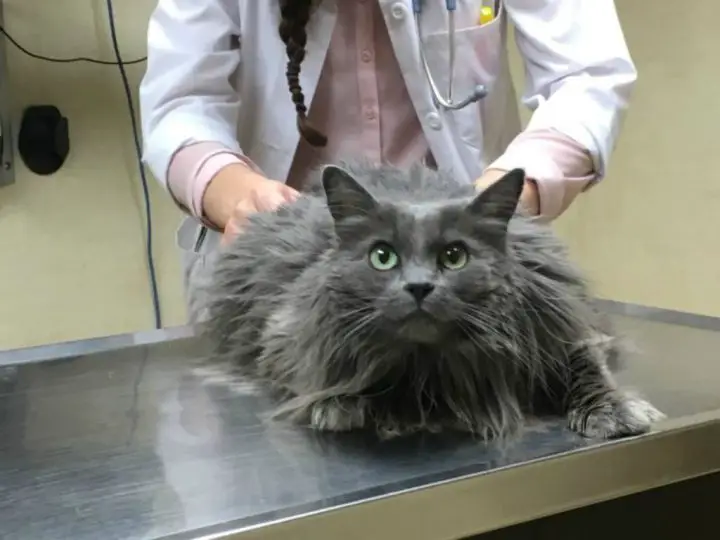Cat Vaccinations: The Ultimate Guide to Cat Vaccinations
Seeing your cat lead a long, healthy and fruitful life is a priority of every pet parent.
Like humans, life-threatening illnesses affect cats too, and it’s better to prevent such health problems with cat vaccinations rather than treat them.
Administering vaccines is an excellent way to improve your cat’s immunity and protect them from diseases caused by bacteria and viruses.
It is ideally better to start vaccinating your cat when they are 6 to 8 weeks but in case you have a mature cat who has never been vaccinated, your veterinarian can still help you figure out a plan to start getting their shots.
A one size fits all protocol is not the best protocol for immunization since factors like age, lifestyle, and the cat’s health determines the vulnerability of a cat to certain diseases.

Categories of cat vaccinations
There are two categories of cat vaccines.
Core vaccines are those recommended for all cats and they protect the cat against rabies, panleukopenia/ feline distemper, feline viral rhinotracheitis and feline calicivirus.
FVRCP/ distemper shot is the combination shot for panleukopenia, feline viral rhinotracheitis, and calicivirus.
The non-core vaccines are administered depending on the cat’s lifestyle and the environment (the diseases common in your location). They include vaccines for:
1. Feline leukemia virus – the vaccine for this disease is recommended for cats who spend time outside. It is a fatal disease that is transmitted through saliva and runny noses.
2. Chlamydia– the shot is part of the FVRCP shot.
3. Feline immunodeficiency virus.
4. Bordetella– recommended for cats who stay at a kennel or go to the groomer. The disease spreads quickly in places with many animals. It is worth noting that the vaccine will not prevent the disease. It minimizes the seriousness of the disease.
5. Ringworm– recommended in refractory cases of ringworms.
6. Giardia– given only in refractory cases of giardia. The dose is two vaccines administered separately. The second second vaccine is administered after four weeks of the initial dose.
7. FIV – feline immunodeficiency virus (feline AIDS).
Schedule of cat vaccinations
There are a couple of shots your cat will require during the course of their lives.
The kitten and cat vaccinations are dependent upon factors like the cat’s lifestyle (indoor or outdoor cat), breed, the type of vaccine and pre-existing medical conditions.
Make sure to discuss with your veterinarian in order to come up with the best schedule for your cat.
A kitten vaccination takes 10 days to start being effective so it is better to keep the kitten indoors during this period.
A year after the kitten series is completed, the adult gets the periodic booster immunizations, FVRCP combination, and rabies vaccine.
The rabies vaccine is required by law but the frequency of the shot varies with every state. Some state recommends yearly shots while others, every three years.
Indoor Kitten Vaccinations
- 6-10 weeks old- FVRCP.
- 11-14 weeks old- FVCRP and FeLV (feline leukemia).
- 15+ weeks old – FVCRP, FeLV and rabies vaccine.
Whether they are a kitten or an adult cat, as soon as you get a new cat, make a point of making an appointment with your veterinarian.
Spend time with the vet to come up with a preventative health care plan that includes deworming, flea control and vaccinations.
Make sure you adhere to your kitty’s vaccination schedule as it helps to prevent many infectious diseases and ensure your cat’s wellbeing.
Risks associated with cat vaccinations
Just like other medications, vaccinations comes with a certain level of risk.
The good news is, the results of immunization outweigh the risks. Immunizations stimulate the cat’s immune system to create protection from illnesses.
This process can create mild side effects like soreness at the injection level and allergic reactions.
There are also far much serious side effects that are less common like immune diseases associated with vaccination and injection site tumors.
Side Effects
Although most cats don’t encounter serious side effects from receiving a shot, it is important to pay attention to any symptom of a bad reaction to the vaccine.
Contact your veterinarian if your cat suffers any negative effects to determine if your cat requires special attention.
Some of the side effects of vaccination include:
- Diarrhea.
- Fever.
- Loss of appetite.
- Lameness.
- Hives.
- Swelling/ redness around the injection spot.
- Vomiting.
- Severe lethargy.
Indoor Cat Vs Outdoor Cat
Vets recommend keeping your cat indoors but the decision whether to have an indoor or outdoor cat fully lies on you.
Indoor cats are safer, healthier and live longer compared to outdoor cats.
- This is because outdoor cats are more exposed to a tone of risks like injuries and exposure to infectious diseases like feline immunodeficiency virus (FIV).
If your cat spends time outdoors, extra precautions are required.
Make sure your cat receives all the shots they need.
Indoor cats are not exposed to many risks but they still need to be vaccinated to keep them healthy.
Vaccinating your cat at home.
Giving your cat its shots at home is not only convenient, it also relieves your cat the stress of visiting the vet and also reduces the veterinarian bill. Before you vaccinate your cat at home, make sure you consult your vet.
Find out the vaccines that can be administered at home and which ones need to be administered by a licensed vet. It is also important to know the type of vaccinations your cat requires based on its medical history.
Planning
Before you administer the shot, check the injection spot, study it then clean it before giving the shot. The injection area should be based on the American Association of Feline Practitioners (AAFP) guideline.
Different vaccines are injected at different parts of the body. You also need to familiarize your cat with the room you plan on delivering the injection, if the cat does not spend time in that room often. This helps to keep them calm.
Gather the supplies beforehand, draw up the vaccine before you capture the cat then ready the injection area. Soothe the cat to keep her calm.
Delivery
Gently pinch and lift the skin at the injection area then gently insert the needle. You will notice blood in the syringe if you are in a blood vessel. If this happens, pull out the needle then reinsert it.
Make sure the cat remains calm throughout the process to avoid injuries. Once it is done, remove the needle from the skin, and then dispose of the needle and the needle cover.
When administering intranasal vaccines, grasp the cat’s paws and tilt its head back using your free hand.
Use an eye dropper to deliver half the vaccine into each nostril. Make sure each nostril gets equal dosage.
Post-vaccination care
Monitor your cat after vaccination and show extra affection and care. Giving the cats treat might make recovery much smoother.
If you notice any adverse side effects, contact your veterinarian as soon as possible.
Sources
https://www.avma.org/public/PetCare/Pages/feline-panleukopenia.aspx
https://vcahospitals.com/know-your-pet/feline-herpesvirus-infection-or-feline-viral-rhinotracheitis
https://vcahospitals.com/know-your-pet/feline-calicivirus-infection




